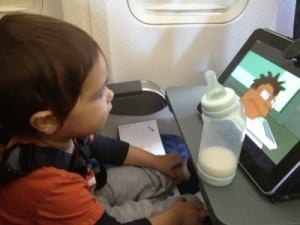 Flying with an infant or toddler is stressful, exhausting, and a little demoralizing. But scary? There are some air travel situations that can be downright dangerous. Here are five things you may be doing wrong when flying with kids.
Flying with an infant or toddler is stressful, exhausting, and a little demoralizing. But scary? There are some air travel situations that can be downright dangerous. Here are five things you may be doing wrong when flying with kids.
1. Flying with a Lap Child
The FAA allows children under 2 to fly unsecured on a parent’s lap. Admittedly, I did this for the first 18 months of my child’s life to save money. But I don’t recommend it.
The majority of the time, having an unsecured child on your lap is no problem. You can hold onto them and it’s easy to breast feed during takeoff and landing. It eliminates the need to lug a car seat onto a plane and strap in a squirming child.
But it’s those unforeseen circumstances that should scare you. Think about if you’re walking down a hallway holding your child and you stumble. Now multiply that by 2,500 times. That’s the amount of force propelling your child forward in the case of severe turbulence or a crash landing. There have been two tragic cases of unsecured kids who were killed in what were deemed as “survivable crashes.”
Thomas Anthony, aviation safety expert at the University of Southern California Aviation Safety and Security Program, explains:
“The forward motion of the aircraft being stopped by this object will cause you, the adult, who weighs a lot more than the child, to pitch forward and to impact upon the child.”
This crash-test dummy video, provided to us by the FAA, illustrates exactly why it’s so dangerous to fly with an unsecured infant or toddler under 2.
Recently, there was a petition to the White House to mandate that children under age 2 be required to have a separate seat and be properly restrained in an approved child-safety restraint seat or system. The woman spearheading this campaign, Jan Brown, has been an advocate for this topic for more than 20 years; she was a flight attendant on United Flight 232 that tragically crashed in Sioux City, Iowa, in 1989. One of the casualties was a 22-month-old boy who was being held by his mother.
For kids less than 20 pounds flying domestically, the FAA and the NTSB recommend using a rear-facing, hard-backed child safety restraint system approved by the FAA for aviation use. International airlines may have different rules on what types of seats are allowed.












